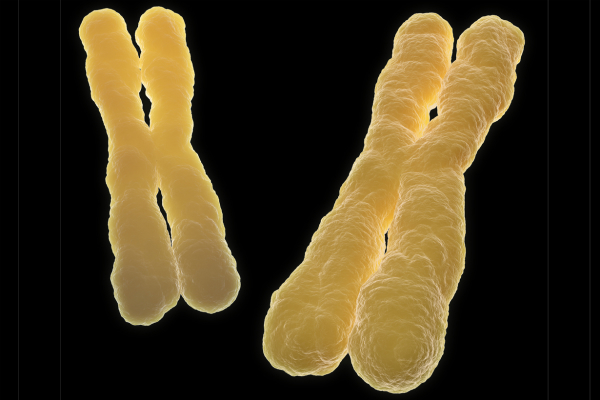
In our bodies, our cells are constantly dividing in order to replenish our lungs, skin, liver and other organs. But most human cells can’t divide forever, and eventually this causes our organs and tissues to degrade as we age.
The "timekeeper" of our cells are telomeres - little DNA caps that sit at the end of our chromosomes, sort of like that plastic bit at the end of your shoelace. Each time a cell divides, these telomeres get shorter and shorter until eventually they're so short the cell can no longer divide.
But researchers know that there is a way to stop the telomere from wearing down - some cells can produce an enzyme called telomerase, which rebuilds telomeres and lets cells divide indefinitely. However they've struggled to understand why telomerase acts in some cells and not others.
Now researchers from the Salk Institute for Biological Studies in the UShave discovered that telomerase has an on/off switch - and can be present in a cell but not slow down ageing if it's turned off.
“Previous studies had suggested that once assembled, telomerase is available whenever it is needed,” senior author Vicki Lundblad said in a press release. “We were surprised to discover instead that telomerase has what is in essence an ‘off’ switch, whereby it disassembles.” Their research is published in the journal Genes and Development.
It’s a pretty huge breakthrough, because if scientists can now work out how to manipulate this “off” switch, it could help them slow down the ageing process and lead to treatments for age-related diseases. And, interestingly, it may also provide insight into cancer cells, which require telomerase to help them divide uncontrollably.
Lundblad, along with graduate student Timothy Tucey, discovered this switch in yeast, by using a new technique that allowed them to monitor each component of telomerase while a cell grew and divided.
Each time a cell divides, its genome must be duplicated completely. And the scientists found that while a cell was replicating, telemorase was sitting in a “preassembly” mode, waiting for a molecular subunit to be added once genome duplication was complete.
But surprisingly, as soon as the telemorase was assembled, it quickly disassembled and switched into the “off” position, they discovered.
The researchers believe that this off switch might help the body keep telomerase at exceptionally low levels inside the cells in order to avoid the uncontrollable cell growth that can lead to cancer. But it could also be the key to helping cells divide for longer.
While it might not seem as though these experiments in a single-celled yeast can tell us much about human cells, much of the initial research on telomerase was done in yeast cells and laid the groundwork for future discoveries in humans.
The next step is to understand more about this switch and how it is involved in ageing and cancer, and then scientists can try to understand how it can be manipulated to keep people healthier for longer.

No comments:
Post a Comment